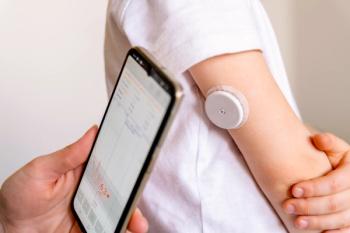
Amivantamab Shows 45% Response Rate in Pretreated Head and Neck Cancer: OrigAMI-4 Findings
Subcutaneous amivantamab demonstrated robust activity in patients with recurrent or metastatic head and neck squamous cell carcinoma previously treated with checkpoint inhibitors and platinum chemotherapy.
The phase 1b/2 OrigAMI-4 study evaluated subcutaneous amivantamab (Rybrevant; Johnson & Johnson) in a challenging population of patients with recurrent or metastatic head and neck squamous cell carcinoma who had progressed after both checkpoint inhibition and platinum-based chemotherapy. The investigational agent achieved an overall response rate of 45% and a median progression-free survival of nearly 7 months, suggesting clinically meaningful efficacy in a setting with limited options.
In an interview with Pharmacy Times, Kevin Harrington, MD, PhD, discussed the key findings and the potential significance of amivantamab for this hard-to-treat patient population.
Q: Could you summarize the key efficacy findings from the OrigAMI-4 trial, particularly response rates, duration of response, and progression-free survival, in this heavily pretreated population with head and neck squamous cell carcinoma?
Kevin Harrington, MD, PhD, FRCP, FRCR, FRSB: We presented data from the OrigAMI-4 phase 1b/2 study in patients with recurrent or metastatic head and neck cancer who had received prior treatment with an immune checkpoint blocker and a platinum-based chemotherapy.
We reported data on two populations: the safety population of 86 patients who received at least 1 dose of the drug and the efficacy population of 38 patients who had at least 2 tumor assessments or had stopped treatment for any reason. The efficacy data relate only to that smaller subset of patients.
In that group, we observed an overall response rate of 45%, with a further 45% showing disease stabilization. When we looked at the lesions themselves, 82% showed evidence of shrinkage—clear evidence of the drug’s efficacy. In the efficacy-evaluable population, the median duration of response was over seven months, median progression-free survival was 6.8 months, and median overall survival was not yet reached. These findings show that single-agent subcutaneous amivantamab, delivered on a 3-week schedule, is very efficacious in this disease.
Q: Given that these patients had progressed on both checkpoint inhibition and platinum-based chemotherapy, how clinically meaningful are the responses seen with amivantamab in this setting?
Harrington: This group of patients is very difficult to achieve responses in. Previously, single-agent chemotherapy or investigator’s choice therapies—such as cetuximab, another EGFR-targeted drug—typically achieve response rates in the single digits or low teens, usually between 5% and 15%.
To see a response rate as high as 45% in this group of patients is, we believe, clinically meaningful and hopefully leads to patient benefit.
Newsletter
Stay informed on drug updates, treatment guidelines, and pharmacy practice trends—subscribe to Pharmacy Times for weekly clinical insights.




















































































































































































































